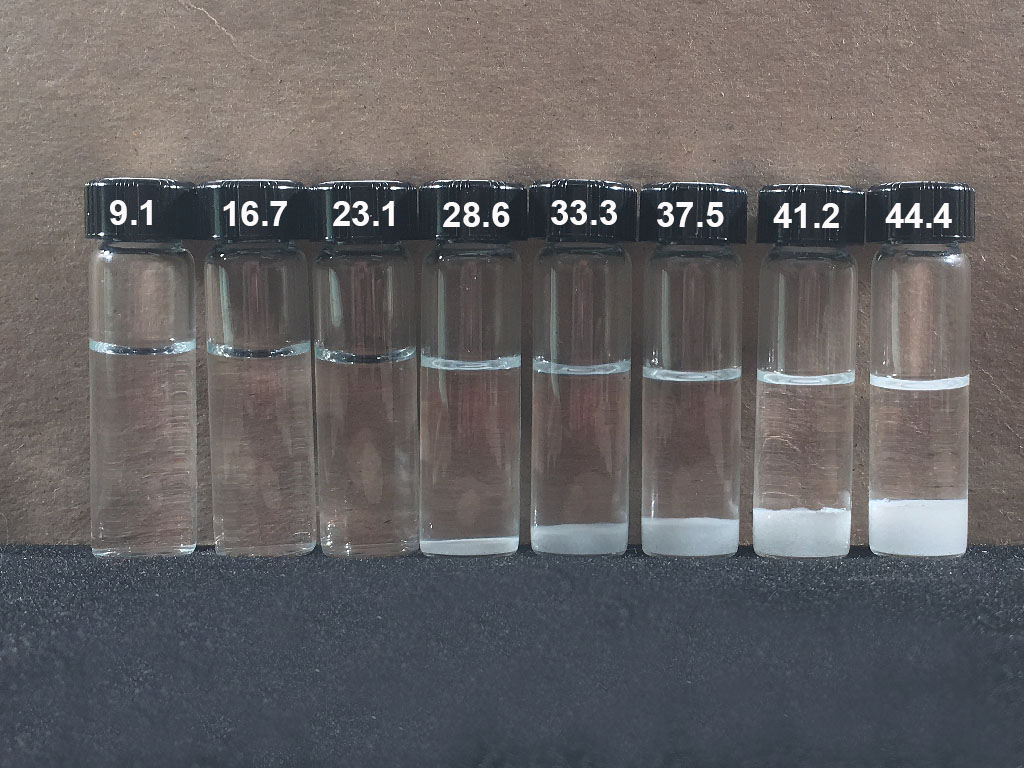Halite crystals are very soluble in water and will dissolve quickly if the glass of water is stirred. The water becomes "salty" (a brine) and many of its physical properties change. Properties that change include taste, density, refractive index, and electrical conductivity. The values of these properties depend on how much salt is added to the water.

Figure 3.03. Salt solutions (brines) made by mixing various proportions of halite (NaCl) and water. The weight percent NaCl for each solution is listed on the glass vial. Click on the image to see a larger version with more information.
The proportions of water and salt used for the mixtures in Figure 3.03 are shown by the red circles on a graph of chemical composition vs. temperature in Figure 3.t04. The horizontal axis is in units of weight percent NaCl. Weight percent NaCl is grams of NaCl per 100 grams of mixture. For these H2O-NaCl mixtures, weight percent NaCl is calculated with the formula:

In Figure 3.04, pure H2O is shown on the left (0 weight percent NaCl) and pure NaCl is shown on the right (100 weight percent NaCl).
Figure 3.04. Halite saturation composition graph. Mixtures of water and halite (NaCl) in Figure 3.03 are shown on a graph of weight percent NaCl vs. temperature. Click on the graph to see a larger, interactive version with more information.
The dashed line in Figure 3.04 marks the weight percent NaCl in a halite saturated solution at 21°C. Click on Figure 3.04 to see an enlarged version, and on that page click on the "Coordinates" button to activate crosshairs when you move your mouse over the figure. Use the crosshairs to get an exact answer to the following question:
Press "Enter" after you type in the number.
Yes. Based on our experiments, a halite-saturated solution at 21°C will have 25 weight percent NaCl.
Press "Enter" after you type in the number.
No. You still have not given the correct answer. The dashed line in Figure 3.04 is located at 25 weight percent NaCl. This is the maximum amount of NaCl that can be dissolved in water at 21°C.